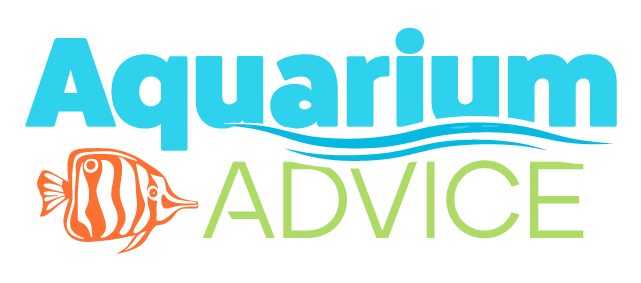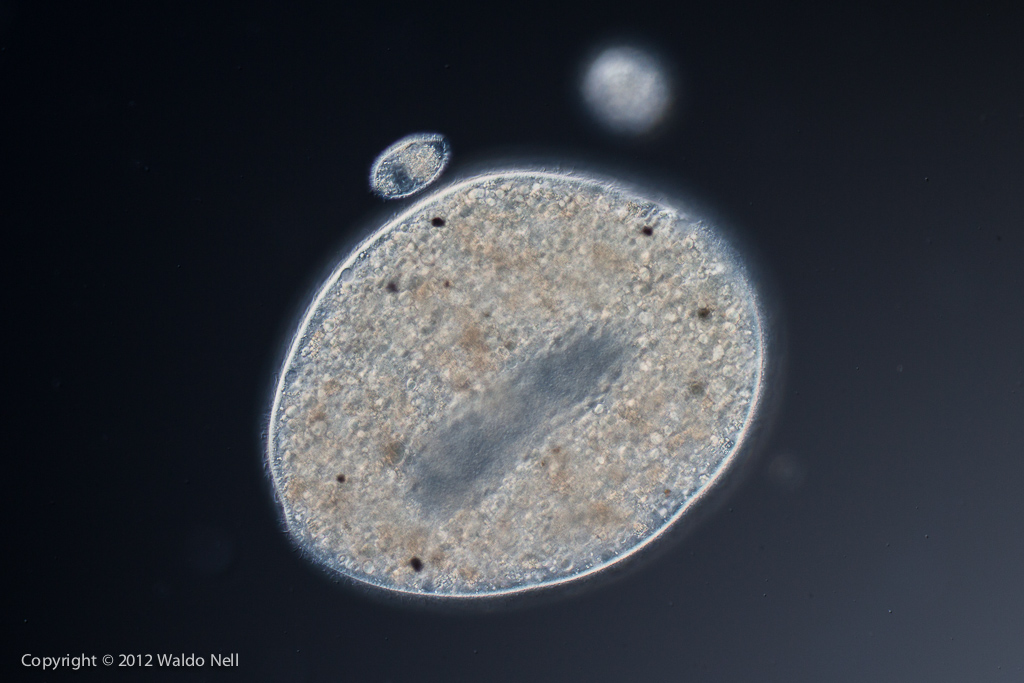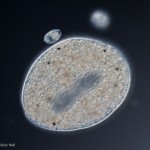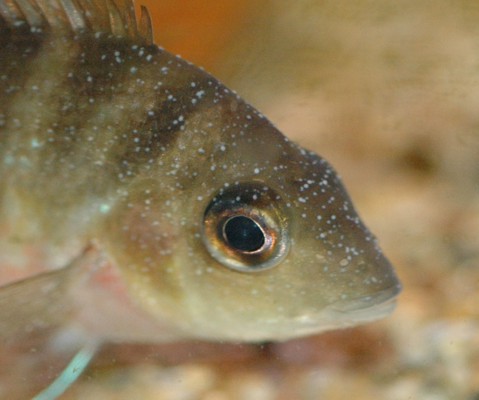Introduction to Ichthyophthirius multifiliis.
Ich, Ick, and White Spot or whatever else you want to call is by far the most commonly seen parasite that nearly every aquarist will encounter at some time. Ichthyophthirius multifiliis is a highly pathogenic ciliated protozoan parasite that infects the epithelia of the skin and gills of freshwater fish. This is also one of the more aggressive parasites that will ultimately kill it’s host if left untreated.
Lifecycle Of The Parasite.
The life cycle of Ichthyophthirius multifiliis consists of three stages: an infective theront(infection stage), a parasitic trophont(active feeding stage), and a reproductive tomont(encyst stage). The infection is initiated by invasion of the skin and gills by free-swimming 40 micrometer pyriform shaped theronts that burrow several cell layers deep into epithelial tissue of the skin and gills and rapidly differentiate into trophonts. Trophonts feed on epithelial cells and grow into 500 to 800 micrometer diameter cells, causing extensive damage to skin and gills, which in severe infections results in the fatality of it’s host.
Ichthyophthirius multifiliis The Aquarium Myth.
This rumor has been spread for far to long and I’m sure everyone has heard it at one time or another and that is “Ich is always present in a aquarium”. This statement couldn’t be further from the truth. It is important to note that the this protozoan can’t live outside water and if dried, its cell wall would collapse permanently destroying this single cell parasite so this point also makes the migration of this parasite from anything other than transport via infected fish or similar water transfer impossible.
Typical Warning Signs Of A Problem.
Behavioral Signs:
- Failure to feed properly.
- Flashing, which is scraping on décor.
- Gathering around the water output.
- Reduced vitality.
- Gasping at the surface.
- Reclusiveness.
Physical Signs:
- White dots, resembling grains of salt on fish.
- Labored breathing.
- Clamped fins.
- Excess slime coat.
- Loss of color.
Stress.
Stress is probably the single largest reason that a fishes immune system can be compromised. Much like humans fish suffer similar physical and behavioral issues when dealing with stress. Below are some common triggers.
- Shipping and transportation.
- Deteriorating water conditions such as a fish in cycle.
- Aggression from tank mates.
- Temperature fluctuation.
Prevention Is The Best Form Of Treatment.
http://www.aquariumadvice.com/fish-disease-index-for-diagnosis-and-treatment/
Treatment Of Ichthyophthirius multifiliis.
There are many different treatments that will eradicate this particular parasite, whether you dislike medications and prefer a natural more organic method there is one for everyone. Let’s get down to why your reading this.
The Heat Only And Or Salt Method(My Personal Preference).
The theory behind the heat and salt method is a done by two steps.
- The first step which increases the life cycle of the parasite.
- The second step is actually killing the parasite from heat.
- This elevated temperature also increases the fishes metabolism which in turn increases the immune system.
Day 1. Start by slowly raising the current temperature 1-2 degrees every hour until you reach 86 degrees Fahrenheit. Simultaneously slowly disperse 1-3 tablespoons of aquarium, rock, kosher salt, or any other pure sodium chloride per gallon of aquarium water(please research your specific fishes toleration to salt).
Day 3. I perform a 25% water change with a full vacuum of the substrate to remove any cysts that has fallen off. If your using sodium chloride replace only the amount of salt for the percentage of water removed.
Day 5-14. I will repeat this process of 25-30% water changes every other day, this process will continue for 5 days after the last visual symptoms are gone. On average this whole treatment will last anywhere from 10-14 day.
*One thing to note when using the heat and or salt method is the level of dissolved oxygen is lower at higher temperature so increased aeration is required. Lastly using of one or either of these treatments requires a little research on your current stock’s ability to handle these conditions.
Medications.
- Follow the directions to the letter for dosage information, special instructions, and warnings related to your own health, and that of your plants, invertebrates, and scaleless or sensitive species of fish. I’m not going to list the directions for each medication but I will simply touch base on the more effective ingredients.
- Prior to starting a regime of any medication a large water change in excess of 50%, some treatments don’t recommend a water change so lowering nitrates and organics prior to treatment is essential.
- Remove the carbon from your filters as this will remove any medications.
- Once the treatment start continue make sure to finish the entire dosage as directed, discontinuing treatment before the parasite is eliminated can lead toward medication resistance.
- Note if your unsure of the effects of specific medications then I would suggest starting with half doses and monitor from there.
Formalin and Malachite Green.
These two ingredients are much more effective when combined as opposed from being used individually. There are a number of commercially available medications that use this combination of medications; Jungle’s Ick Guard, Quick Cure by API, and Rid Ich Plus by Kordon’s are the most relatively available products at most fish stores.
*One thing to note is Malachite green acts as a respiratory poison, damaging the cell’s ability produce energy to drive vital metabolic processes. Formalin is a powerful disinfectant used to kill microorganisms or as a preservative for biological specimens. These are poisons in their own right so be careful when using these products and follow the directions very carefully. Malachite Green will also stain aquarium silicone and décor so keep that in mind too,
Copper.
Copper is certainly of the more common recommendations for the treatment of Ich simply due to the fact the products offered work. The most common choices here are Coppersafe from Mardel and Seachem’s Cupramine.
*One thing to note it causes oxygen depletion, it’s extremely toxic to snails and invertebrates, it may cause irritation to scaleless fish and plants and as with any medication overdosing can cause a health risk all the fish in the system.
There are other commercially available medications that I have no personal experience so I left them out as I would hate to support a product that I’ve never used.
Organics.
One such treatment is Kordon’s Herbal Ich Attack which uses active ingredients consisting of five natural organic herbals. This is probably the least effective medication from my experience. The positive aspect of this treatment is the chance for any toxicity issues are extremely low.
Closing Thoughts.
Ichthyophthirius multifiliis does not mean a death sentence for any aquarium fish in this day and age, there are so many treatments and information available today this should be one of easier parasites to deal with. Good luck!










